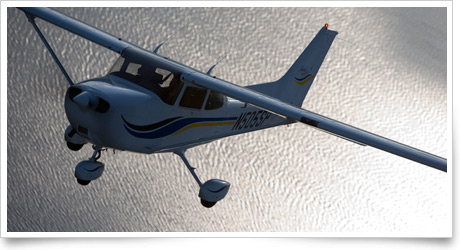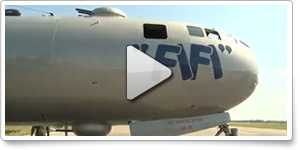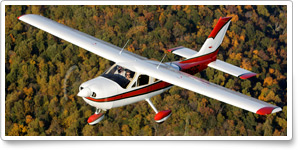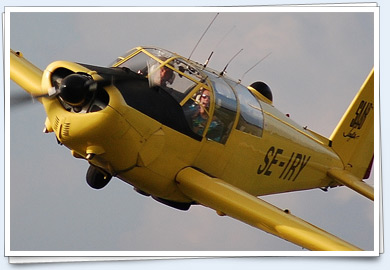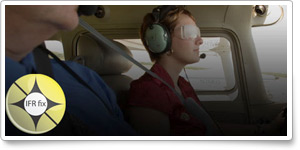|
| ||||||
| ||||||
| ‘BEYOND GLIDING DISTANCE’ |
| |||||
Training Tips‘Beyond gliding distance’ As you prepare to take your private, recreational, or sport pilot checkride, your flight instructor asks you increasingly detailed questions about flight planning’s risk management to ready you for queries from your designated pilot examiner.
Today she hands you a sectional chart and asks how you would respond to an invitation to fly your single-engine airplane from your base at Long Island MacArthur Airport in Islip, N.Y., on a direct route of 30 nautical miles to Connecticut’s Tweed-New Haven Airport.
Thirty miles isn’t much—but you quickly observe that about two-thirds of the route is over a wide expanse of Long Island Sound.
Is that a problem?
Not from a regulatory point of view (although you would probably not be permitted to do this while still a student pilot). But it raises some interesting questions.
The prospect of the direct flight causes you to ponder the approximate power-off glide range of your aircraft from a variety of cruise altitudes, at your aircraft’s best glide speed, considering given winds aloft. How long would you find yourself beyond gliding distance at various points along the route?
You could choose a less direct route. Or you could elect to “spiral up” to cruise altitude over land before starting out over Long Island Sound, she suggests.
There’s much to consider—and pilots have diverse opinions about how to proceed, making for spirited debates.
Read AOPA Editor in Chief Thomas B. Haines’s discussion of the risk-assessment question in his March 2011 AOPA Pilot Waypoints column. Flight Training Editor Ian Twombly blogged in November 2008 about the considerations for an 86-nm crossing of Lake Michigan—a route well known to many pilots.
Next your CFI poses a sample aviation knowledge test question: “When an aircraft is being flown over water, under what circumstance must approved flotation gear be readily available to each occupant?”
Here are possible answers: A) At night and beyond gliding distance from shore. B) Anytime the aircraft is beyond power-off gliding distance from shore. C) When operating for hire beyond power-off gliding distance from shore.
You check the regulation and reply, “C.” Flotation devices are required when the aircraft is operated for hire over water and beyond power-off gliding distance from shore.
Correct. For large aircraft, she adds, separate rules apply.
Want to test your risk-management skills from your computer? Create a hypothetical flight and plug the parameters into the Air Safety Institute Flight Risk Evaluator .
Flight Training NewsTerrafugia flying car prototype takes flightThe Terrafugia Transition, a flying car or roadable aircraft—whichever you prefer—did a lap around the pattern at an airport in upstate New York last week. It was the first time a Terrafugia prototype has flown in the pattern. A proof-of-concept aircraft flew in 2009. Read more >> King Schools announces online FIRCKing Schools Inc. announced March 30 it will unveil an online Flight Instructor Refresher Clinic by the end of April. At a press conference at the Sun ’n Fun International Fly-In and Expo in Lakeland, Fla., John and Martha King said the course will delve more deeply into risk management and give flight instructors more insight into topics such as identifying and changing at-risk behavior and conducting an effective flight review. Read more >> Sennheiser to expand scholarship program in 2012Aviation headset manufacturer Sennheiser is expanding its “Live Your Dream” program in 2012. The company will award eight $1,500 flight training scholarships. The program, launched in 2011, began with seven $1,000 awards. Applications open in May. Sennheiser said it will begin supporting a new program at high schools, universities, flight schools, and flight centers in which experienced pilots will present a variety of topics, such as the excitement of aviation and the educational value of learning to fly. Read more >> Pan Am International Flight Academy adds sims to training fleetPan Am International Flight Academy said March 27 it has added three full flight simulators to its Miami and Memphis, Tenn., training centers. The Miami center now has a Boeing 777 Level D simulator and a B747-400 Level D simulator. The Memphis center now has an MD-11 Level D simulator. The company said it plans to acquire additional simulators in 2012. Purdue forms student safety organizationPurdue University said it is forming a student chapter of the Flight Safety Foundation, an organization created to pursue continuous global aviation safety improvement through research, education, advocacy, and publishing. Purdue’s will be the foundation’s inaugural student chapter. “Purdue’s chapter will facilitate aviation research opportunities between our graduate students and airlines around the world,” said Stewart Schreckengast, associate professor of aviation technology. Spread your ‘Wings’ with Air Safety Institute minicoursesAre you in search of earning additional FAA Wings credit? Most Air Safety Institute minicourses now qualify for a half credit each toward the Wings program. And there’s strength in numbers: Successfully complete two minicourses to earn one full credit. With nine qualifying Air Safety Institute minicourses those numbers add up quickly. Pick from a variety of topics, including a guide to using flight service, IFR chart refreshers, accident case studies, and even a review of pneumatic systems for pilots and mechanics. Training ResourcesA recent midair collision in Longmont, Colo., reminds us that while they are rare, midair collisions do happen and usually with tragic results. Even if your aircraft has traffic reporting capabilities, “see and avoid” is every pilot’s responsibility and is the reason VFR pilots should spend the majority of their flight time looking out the windscreen. Learn some tips on how to decrease your chances of colliding with another airplane with the Air Safety Institute’s Collision Avoidance Safety Advisor and online quiz.
Did you know that student pilots who join AOPA are three times more likely to complete their flight training? Membership includes unlimited access to aviation information by phone (800/USA-AOPA, weekdays from 8:30 a.m. to 6 p.m. Eastern time) or from Flight Training Online or AOPA Online. If you're not already a member, join today and get the pilot’s edge. Login information is available online. AOPA Live at Sun ’n Fun 2012: Final report Career PilotSouthwest takes delivery of first Boeing 737-800Southwest Airlines on March 21 celebrated the arrival of the carrier's first Boeing 737-800 at its maintenance facility in Dallas. The new jet was delivered March 8 and will undergo several regulatory and conformity procedures before it enters revenue service April 11. The 737-800 carries 175 passengers, almost 30 percent more than the 737s in Southwest’s existing fleet. Southwest plans to take delivery of 33 737-800 aircraft in 2012. Boeing, Airbus, Embraer to collaborate on biofuelBoeing, Airbus, and Embraer signed a memorandum of understanding March 22 to work together on the development of drop-in, affordable aviation biofuels. The three leading airframe manufacturers agreed to seek collaborative opportunities to speak in unity to government, biofuel producers, and other key stakeholders to support, promote, and accelerate the availability of new and sustainable jet fuel sources. The collaboration agreement supports the industry's multipronged approach to continuously reduce its carbon emissions. Plane SpotterCessna Cardinal: Stylish bird Training ProductsNoral three-inch seat cushion with backA good sight picture can make all the difference with achieving a good landing. For pilots who need a little boost in the cockpit, Noral’s three-inch seat cushion with back provides height and back support. The cushion is foldable and has a strap to secure it to an aircraft seat, or to be used as a carry handle. It sells for $80 from PilotMall.com. Order online or call 800/249-5730.
Note: Products listed have not been evaluated by ePilot editors unless otherwise noted. AOPA assumes no responsibility for products or services listed or for claims or actions by manufacturers or vendors. Member BenefitsAircraft renters: Don’t fly unprotectedNow that spring is here and summer on its way, more and more of us will be taking to the skies over the next few months. If you rent an aircraft, you don’t need to run the risk of flying without the benefit of insurance. AOPA members receive a 5-percent discount on renter’s insurance policies, allowing members to obtain a comprehensive package for as little as $99 a year. Read more >> New member discount adds value to AOPA membershipAir Ledger is the newest company to join the AOPA Lifestyles Member Discounts Program, a free, core membership benefit available to all AOPA members. Air Ledger is offering AOPA members two free months of its real-time aircraft expense-tracking solution. It’s easy to take advantage of this discount through the AOPA Lifestyles Member Discounts program. Just log in to the Lifestyles Web page and click on one of the 24 offers now available. All you need to do is be an AOPA member. BlogsTraining showcased at Sun ’n FunFor once, flight training was given plenty of attention at this year’s Sun ‘n Fun. Flight Training Editor Ian Twombly gives you all the details. Also, Flight Training Technical Editor Jill W. Tallman shares the results of the April Flight Training digital subscriber poll on radio communications. Flight simulation conference in Munich, GermanyTake a tour of this year’s Aerosoft Conference with blogger and flight sim enthusiast Francois A. Dumas, who explains what’s going on in the global sim community in the Let’s Go Flying blog. AOPA Career OpportunitiesEver dream of turning your passion for aviation into a career? We’re looking for a vice president of strategy and philanthropic operations, director of accounting, program manager—products, project manager of online products, manager of regulatory affairs, director of new market development, associate project manager, aviation education program developer, and associate editor–Web/ ePilot. To learn more about other AOPA career opportunities, visit AOPA Online. Community
AVIATION EVENTS & WEATHER
| ||||||||||||||||||||||||||||||||||||




